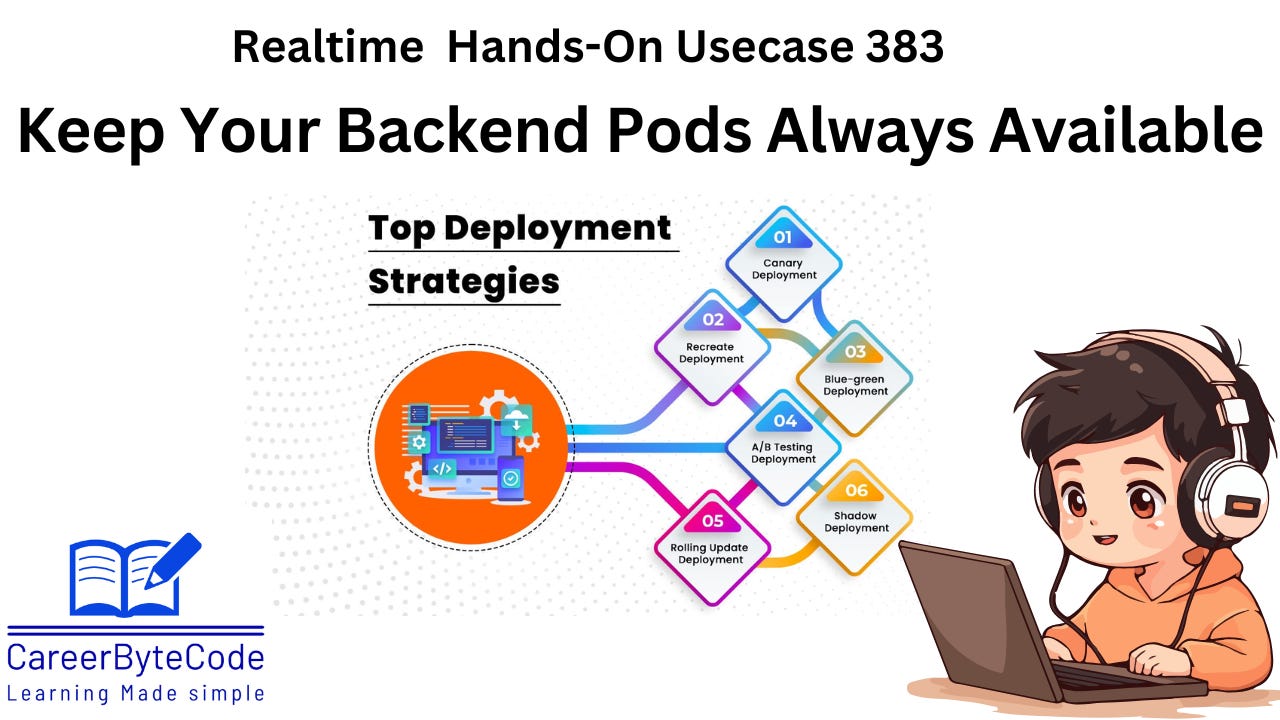Kubernetes Rolling Updates for Backend Services: Ensure 24/7 Availability During Deployments
AKS Rolling Updates: How to Deploy Without Breaking Production
1. Problem Statement :
Every time the backend microservice in the AKS cluster gets updated, users experience dropped requests and errors. The root cause is simple: the current deployment strategy kills off old pods before new pods are fully started and healthy. This creates a window where there are zero healthy pods serving traffic. That means active user sessions can be interrupted, APIs might become temporarily unavailable, and any critical transactions in flight are at risk of failure. This kind of outage isn’t just annoying—it can directly impact business reputation and user trust, especially for high-availability services.
This use case fixes the core problem of downtime during deployments in Kubernetes by showing how to safely update backend pods in AKS without disrupting live traffic. It solves the real-world issue of:
Old pods terminating before new pods are ready (leading to unserved requests)
errors and connection failures for users during rollouts
Lack of automated health checks before switching traffic to new pods
The use case demonstrates how to implement a proper rolling update strategy, using maxUnavailable: 0, maxSurge: 1, and readiness probes, so that there is always at least one healthy pod available, and updates happen without any impact to users. The ultimate goal: ensure seamless, zero-downtime deployments in a real production environment.
2. Why We Need This Use Case
This use case demonstrates how to keep your service available 24/7, even while rolling out new code. By configuring Kubernetes Deployments with a rolling update strategy, you:
Make sure there’s always at least the current version running and accepting traffic while new pods spin up.
Validate that each new pod is actually ready to serve requests before switching traffic over, using readiness and liveness probes.
Allow for safe, automated rollouts—so you don’t have to babysit deployments or worry about manual intervention.
Track which version is running where, using labels and selectors, making troubleshooting and rollback easier.
This use case demonstrates the right way to implement zero-downtime deployments using Kubernetes' rolling update strategy. It walks you through:
How to configure a Deployment so that new pods must become healthy before old ones are terminated.
How readiness and liveness probes actually safeguard traffic flow during updates.
The impact of deployment parameters like
maxUnavailableandmaxSurgeon your rollout stability.Using real YAML manifests and rollout commands to move from a broken deployment process (with real, observable 5xx errors) to a safe one.
Version tracking and troubleshooting using rollout history.
In short: it’s a practical, step-by-step demo of how to avoid downtime and keep every update safe, controlled, and observable.
3. When We Need This Use Case
When users can’t tolerate downtime or dropped requests during updates (e-commerce, APIs, finance, gaming, etc.).
When your team needs to deploy often, and reliability is a higher priority than speed of deployment.
When you want to automate health checks and traffic routing, rather than relying on manual testing.
When you need easy rollback or version tracking for debugging and compliance.
Any time you have user-facing apps or APIs that can’t afford downtime during releases.
If your business or SLAs require high availability at all times.



